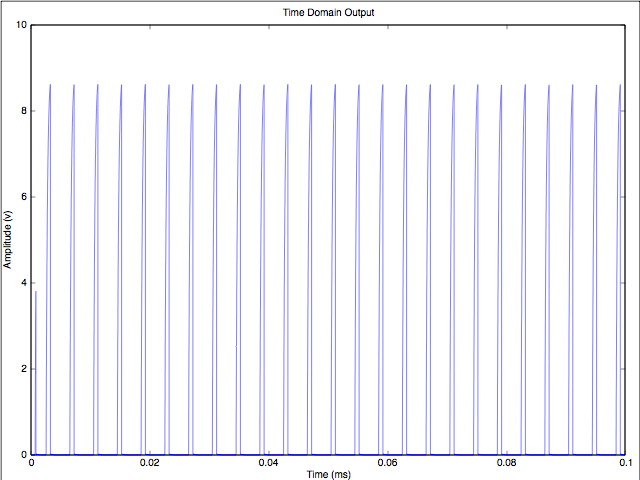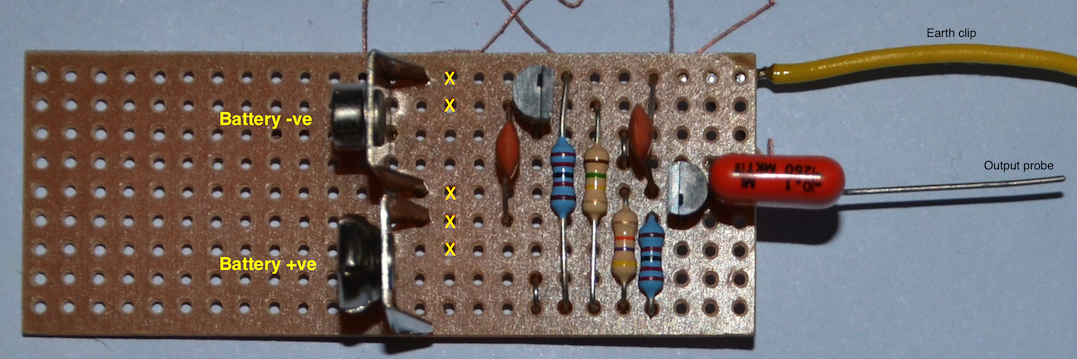Signal Injector
A simple signal injector for troubleshooting radio receivers
A signal injector is a low-power oscillator that generates a signal containing many harmonics in the audio and low-frequency RF spectrum. This allows you to test a radio receiver’s audio and RF stages. They are very simple to build, and every workbench should have one.
The circuit
The basic circuit for for signal injector is an Astable Oscillator - two
transistors configured to switch the state of the other alternately
transistor.

The oscillator’s operating frequency is set by R2, R3 and C1 & C2.

where…
- f is the frequency in hertz.
- R2 and R3 are resistor values in ohms.
- C1 and C2 are capacitor values in farads.
- T is the period.
The output approximates a square wave with the duty cycle controlled by the values of R2 and R3. In the case where R2 = R3, the duty cycle is very close to 50%, and the circuit produces a reasonable square wave. This is not what we want. A square wave is comprised only of odd harmonics; ideally, we’d like both the odd and even harmonics so that there is a signal close to wherever the radio is tuned.
Simulation
Some experimentation with the QUCS circuit simulator suggests reasonable values for the resistors and capacitors
| Part Number | Value |
|---|---|
| R1 & R4 | 22k Ohm |
| R2 | 470k Ohm |
| R3 | 100k Ohm |
| C1 | 10n F |
| C2 | 10 nF |


You can see from the simulated data that the oscillator output is full of nice fast-rising edges (good for harmonic generation) and does indeed contain harmonics out to beyond 20 kHz (that’s as far as I plotted; the spectrum continues, but levels are too low to show on this plot). The low levels at higher frequencies are a good thing, as typically, the circuit you’ll be testing with this generator will be sensitive to tens to hundreds of micro-volts; you don’t need big signals to test these circuits.
You can easily prove the circuit generates higher harmonics by building it and connecting the output to the antenna of an AM radio - you’ll hear a buzzing noise repeating as you tune across the AM band.
Building the signal injector
The circuit is easily built on a scrap of veroboard.

The yellow Xs are where the copper strips are cut on the backside.
Using the signal injector
This circuit is only to be used on battery-powered devices, NOT anything mains-powered. This equipment provides no isolation from the mains.
The ground clip is connected to the ground on the radio receiver, and the output probe touched to the various stages’ inputs, usually working back towards the antenna from the speaker/headphones. When you stop hearing a sound, you’ve found the non-working stage. From there, it’s a matter of faultfinding in the stage (usually a duff transistor, capacitor, or broken wire).
